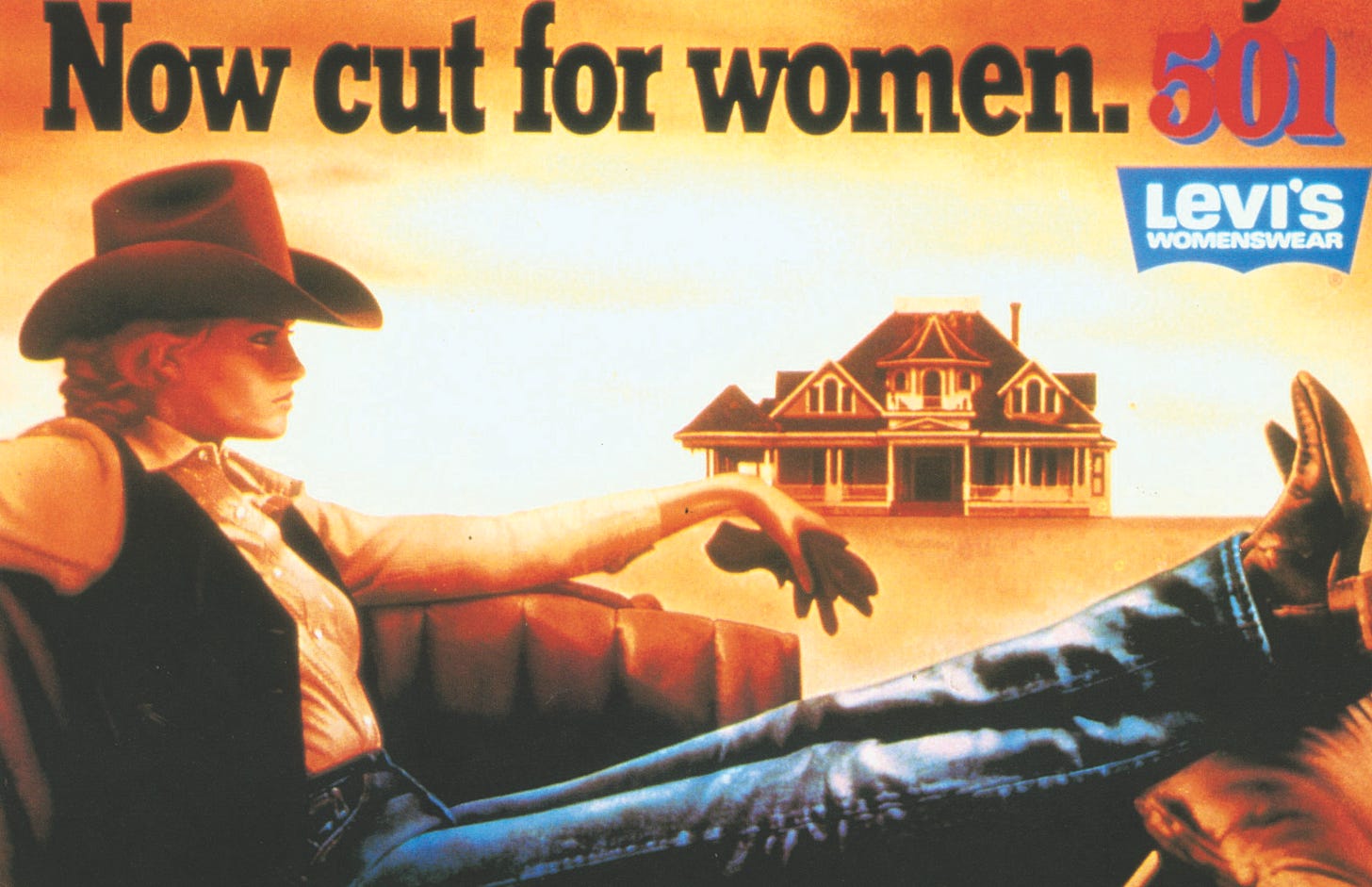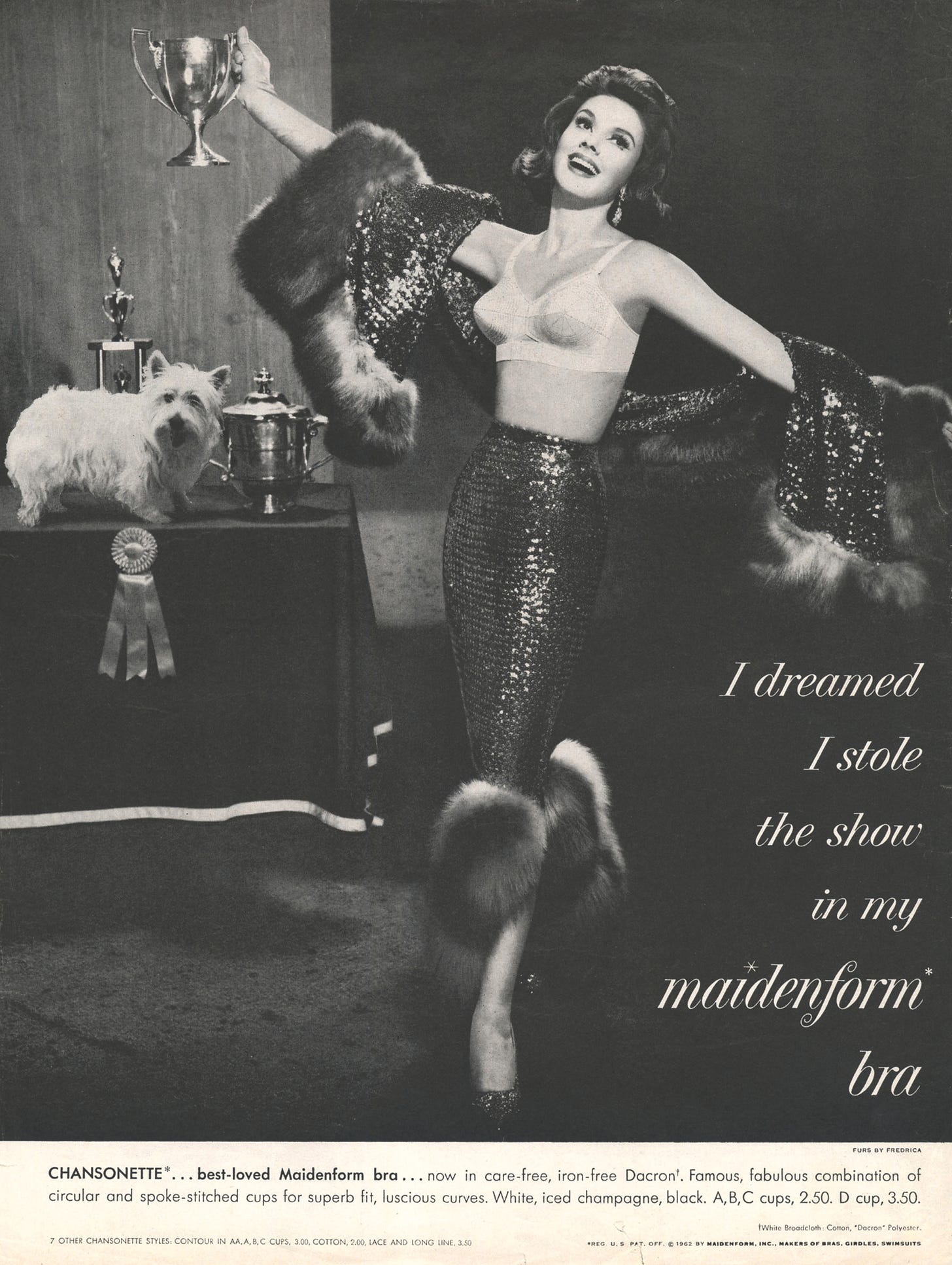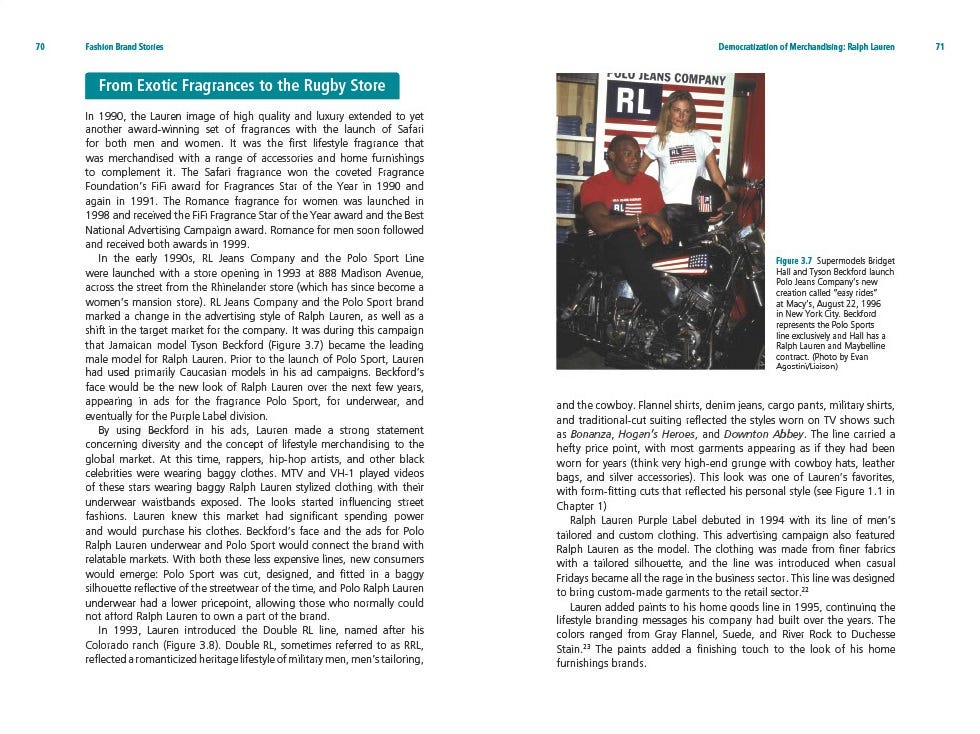IN CONVERSATION with Dr. Joseph Henry Hancock II: Pt. I
Award winning professor and brand storytelling author Dr. Joseph Henry Hancock II and I sat down to discuss his latest book: Fashion Brand Stories.
Do you ever wonder why some brands continuously win the heart of consumers all over the world? Or why when we see a particular color in a certain shade, our brains automatically connect it to a certain brand? Well, I’ll answer in two words: Branding & Storytelling.
In a vastly competitive landscape like the fashion industry, brands must create authentic brand stories where consumers can see themselves in the storyline. We all want products that make us feel good and solve real problems.
Today, I’m honored to welcome a very special guest by the name of Dr. Joseph Henry Hancock II, who I had the pleasure of sitting down with to discuss his latest book, Fashion Brand Stories. His book highlights inspiring stories from legendary fashion brands and gives us a unique look into the world of branding & storytelling through a fashion educator’s lens.
Joe is an award-winning professor, brand storytelling author, principal editor for Fashion, Style, & Popular Culture, co-editor for The Fashion Business Reader, and program director for online MS in Retail & Merchandising at my alma mater, Drexel University. I was fortunate enough to have him as my teacher during my college years and to this day, he has remained a one-of-a-kind mentor and career guide for me.
Now without further ado, let’s jump into part I of our conversation around the world of branding & storytelling.
Amarissa sits down with Dr. Joseph Henry Hancock…
So .. you wrote a book! A brilliant one at that. But before we get into the book, can our audience meet the man and the author behind the book?
Well, as you know, I’m an old-school retailer, I'm telling students that now. Retail operations is my background. I worked for Gap for about ten years of my life, and then I worked for Limited Brands in corporate. I soon realized that I was not an office guy. In my last position, I was a regional field merchandiser for Target Corporation. I think you've heard this story before, but I had the wonderful states of Oregon, southern Washington, Idaho, Utah, and Montana. In my loves of love throughout my career, I always wanted to be a professor.
I remember at 22, one of my professors said, “What do you want to be when you enter the industry?” I pointed to her and said, “I want to be you someday” and she thought that was funny. Here’s a behind-the-scenes… I wasn't the best student. However, I wanted to continue my education. I went out and worked for three years, and then I called my professor and told her I wanted to get a master's degree. Fast forward, I received my Masters and Ph.D. from Indiana University.
What would you say has been the driving force behind your career?
Well, my passion has always been about helping others and trying to understand them. And as you know, I love people, all types of people. That’s just who I am. I was taught this by my mom. As a member of the GLBTQ community, I've always attracted myself to folks on the margin, but I like people and I enjoy being around people.
That’s beautiful and it definitely shows. So your book focuses on fashion branding and storytelling. When would you say your love for branding ignited?
Well always being fascinated visually, like yourself, I got into a merchandising program as an undergrad and then continued this love of visual culture. So I think that I've always been fascinated by studying advertising. I loved looking at ads and thinking “What's happening here?” In looking at ads, fashion was always the one thing that I enjoyed. My first academic paper was on a Jean Paul Gaultier perfume ad in the mid-90s, where he started to use the female torso for the bottle that was modeled after Madonna and her lovely cone look. So that whole love of visual culture, trying to understand what's going on in fashion and the advertising world, really got me into this notion of branding.
Also, when I worked at Limited Corporation in the marketing department, I became very fascinated with how things were created visually. For example, and you probably know this from your career, they want to show a hot guy wearing ripped-up dirty jeans, so they would ask someone to go out and make these jeans look dirty … like actually go outside! So I was intrigued by that whole idea of storytelling. Like, okay, we're creating a story that doesn't exist, but we want to entice people into buying. I’ve always been fascinated by brands that take risks in their marketing strategies.
So what people need to know about me is I'm just somebody that likes this notion of how stories are conveyed. I'm very visual, and I like how brands repackage this notion of diversity into culture.
I'm glad our audience got to know a little bit about your fascinating background. Now, let’s get deeper into your book. What was your journey to Fashion Brand Stories? What made you think, “I’m ready to write a book and I want to share it with the world!”?
Okay, so I actually did not do that (laughs). A wonderful man by the name of Joseph Miranda came to Drexel University and he was with Fairchild Publications in New York. We were sitting in my office talking about my dissertation, as you know, that was on cargo pants. I said to him, “Well, I didn't really do a history of cargo pants. I talked about how branding influenced the cargo pant and changed consumers' ideas about them.” And he said, “Oh, that's interesting. We're looking for someone to write a branding book.” He told me what they wanted the book to be like and I said, “That is the most boring idea I have ever heard in my life. Nobody will read that. Students don't like reading that kind of stuff.” He then asked what I would do. I told him I would do a book that was kind of like case studies, that teaches students the critical cultural theory idea, and breaks it down so it's easy for them to understand. The case studies would be like they’re reading People Magazine. He then told me they would put it in a proposal and we'll talk about it. So I wrote the proposal for Brand/Story, the very first edition, back in 2007, and submitted it to Fairchild Books. I was in shock when they picked up the option to do the book.
The first edition of the book was published in 2009. I don't know if you've seen the older editions, and if you haven't, I can send them to you. I chose brands that were really hot topics at the time. There's a brand in the first edition that's a transgender brand.
What’s the name of the brand?
The brand is Brini Maxwell, but it no longer exists. It was a show on the Style Network set in retro 50s style. I talked about transgender fashion in the book and I got feedback from academics in the fashion apparel industry, mainly from the middle United States, that the book was “too gay”. The book didn’t do too well and it didn’t fly initially. Well, two years pass, and branding becomes this hot topic. So I was a little bit early…. but the book starts selling!
I thought to myself, okay, well, it's over. It's done. I did the book. It was fab. It was fun. I had a great time doing it. But It's over. Then in 2014, a woman named Amanda, also with Fairchild, came to Drexel University and told me that they asked students about the textbooks that they buy vs. the ones they actually read. And guess what book was number one? *drum roll* … Mine! They then asked me to do a second edition of the book. This came out in 2016 and has sold solidly since.
In 2021, a woman by the name of Georgia Kennedy at Bloomsbury emailed me asking when the third edition of Brand/Story was coming out and I told her there wasn’t going to be one. She proceeds to tell me that it’s one of her top books. Now, here's the twist. She then tells me that the book is being heavily used in art schools to teach students who are artists how to brand. Here's me thinking Brand/Story, a branding book, is for merchandising students when in reality, it's being read by art students who don't know anything about branding. Fast forward, she asked if they could rebrand Brand/Story. I agreed, so we changed the name to Fashion Brand Stories, and rebranded it by making it ten chapters with an intro. That's the new version of the book.
So to answer your question, this is a book that I never thought I'd still be doing. Now it’s over ten years old and I’m really proud of it and proud of myself. I wasn't the person who was going to be a writer, but I've turned into it, and I enjoy it.
As a professor, it must feel rewarding to know your book is being circulated amongst many students. So you mentioned that you received feedback that your first book was “too gay”. I didn’t understand this comment because how can a book on fashion be “too gay” when fashion touches everyone? As a self-described gay man, when you received these comments, what was your reaction?
It made me feel good! I'll tell you why, and you’re going to laugh, but what's fashion without gays, right? Going further, what's fashion without people of color? Fashion has always been an industry that's drawn in differences. We have to remember some of the first shop girls in department stores were “ladies of the evening” who changed their careers, right? Coco Chanel was a woman who dressed women of the evening. Those were her first clients. We have to think about the fact that we can't erase our history. So when I get a comment like, “oh, that's too blankety-blank”, I think well, that's who I am. That's what I identify as. It's how I see the world … through my lens. We all have our own worldview.
I had colleagues at Baylor University and Rhode Island say that this was one of their favorite books. The book also had huge adoptions in California, and what I think is even funnier is that it had bigger adoptions in the UK. I love the fact that even though it got that critique, it was still getting used and people found it as a good resource for classes.
I also believe that generations behind me (I’m Gen X) are more open-minded. I always say, if students are enjoying reading this book and are learning something from it, I don't care about negative opinions, I'm having a great time with it, and I just want students and readers to learn and enjoy the book.
Speaking of marginalized groups, with there being many designers of all ages, backgrounds, races, and sexual orientations in the world, how important is it for you to put diversity, equity, and inclusion at the forefront of your writing?
It's very important for me to hit these marks. The industry is all about differences. I have a clear agenda in my writing, meaning if someone is on the far right, they're probably not going to like the book very much, and I apologize to them, but that's just who I am. I think touching on those differences is necessary.
Also, it's really important to understand that brands are trying to hit these marks as well. In the 90s, Ralph Lauren successfully used Tyson Beckford in his ads for Polo Sport to get that “hip-hop customer”. Calvin Klein does the same thing when using Black models in their ads. I want to showcase and celebrate the diversity in our culture.

So let’s get into the main topic of your book: fashion branding and storytelling. In your summary, you mention the importance of storytelling and how fashion brands must craft engaging brand stories. Can you give us your definition of fashion branding and the essential components that it encompasses?
Well, fashion branding is the cumulative image. It's the context and life that a company gives a product. For it to be a successful brand or “brand/story”, you have to use the elements of storytelling. You have to have the character, which is usually the product, the plot, which is the reason why the consumer wants to buy it, and the narrative that goes along that relates to the consumer.
Also, in the book, I talk about the notion that a product will change your life forever. When we go shopping, we see something we want to buy and we buy it because we think it will change us in some capacity. Also, the notion of reinvention is really important. Brands that remain stagnant and don't reinvent the character, which is the product, usually suffer.
I always talk about this with retailing and clothing: brands release a garment, right? The next year they improve it, so when you go shopping, even though you own it already, you’ll buy the new version because it's a little better. When I worked at Gap, I saw how genius they were with this. They would sell similar products year after year, but they always improved them, and customers would come in and buy something they already had. My favorite thing was always asking somebody, “Oh, is that new?” And they're like, “Oh, no, this is last year's version.” But it would look like this year's version. J. Crew is really good at doing that too. Also, Calvin Klein has been fabulous at this with their jeans. They’re always perfecting their jeans. And the story that goes along with that, changes, and that's what keeps customers interested in the product.

Speaking of Calvin Klein, your book cover features their billboard in Soho, NYC. What inspired you to use this image as the cover?
I always say that Calvin Klein has some of the best forms of advertising out there. So it was only right I featured this traffic-stopping billboard as the cover.

Calvin Klein is a brand that's famously known for not being afraid to push the envelope with their ads. Your cover is their 2009 billboard with one girl and three shirtless men, insinuating a sexual fantasy. Some said the ad was controversial, while others said it was iconic. Would you say more brands should push the envelope in this way? How should brands assess the risk they should take when putting out content?
Brands should push the envelope but they can do so in different ways. Not all brands need to push envelopes through sex. They can do this through different means. For example, in the book, I talk about Gwen Stefani with Harajuku girl and this notion of selling perfumes on HSN. You can't smell perfume, but you put it in a cute bottle design that pushes the envelope. You package it and it sells out on HSN when you can't even smell it. I think pushing the envelope is important, but you can do it in different ways, and they can either be recognized as hardcore pushes or soft pushes.
Coca-Cola pushed the envelope by giving us the Santa Claus look that we know today and they did this to sell soda pop. Maidenform Bra Company was the first to push the envelope with women and bras. It wasn't Victoria's Secret, it was Maidenform and their advertising campaigns, and they pushed the envelope when creating their “I Dreamed” campaign. Levi’s pushed the envelope when they made the first ever pair of jeans for women in the 1930s.

And there’s much more to come! Please stay tuned for pt. II of this electrifying interview to learn more about the case studies for this book and to read more of his thoughts on all things branding.
Tips, advice, plus the link to get this amazing book … read part 2 here.
You can follow Fashion Talk on Instagram.











Another brilliantly executed interview! So enjoyable and enlightening. Thanks and keep it up!